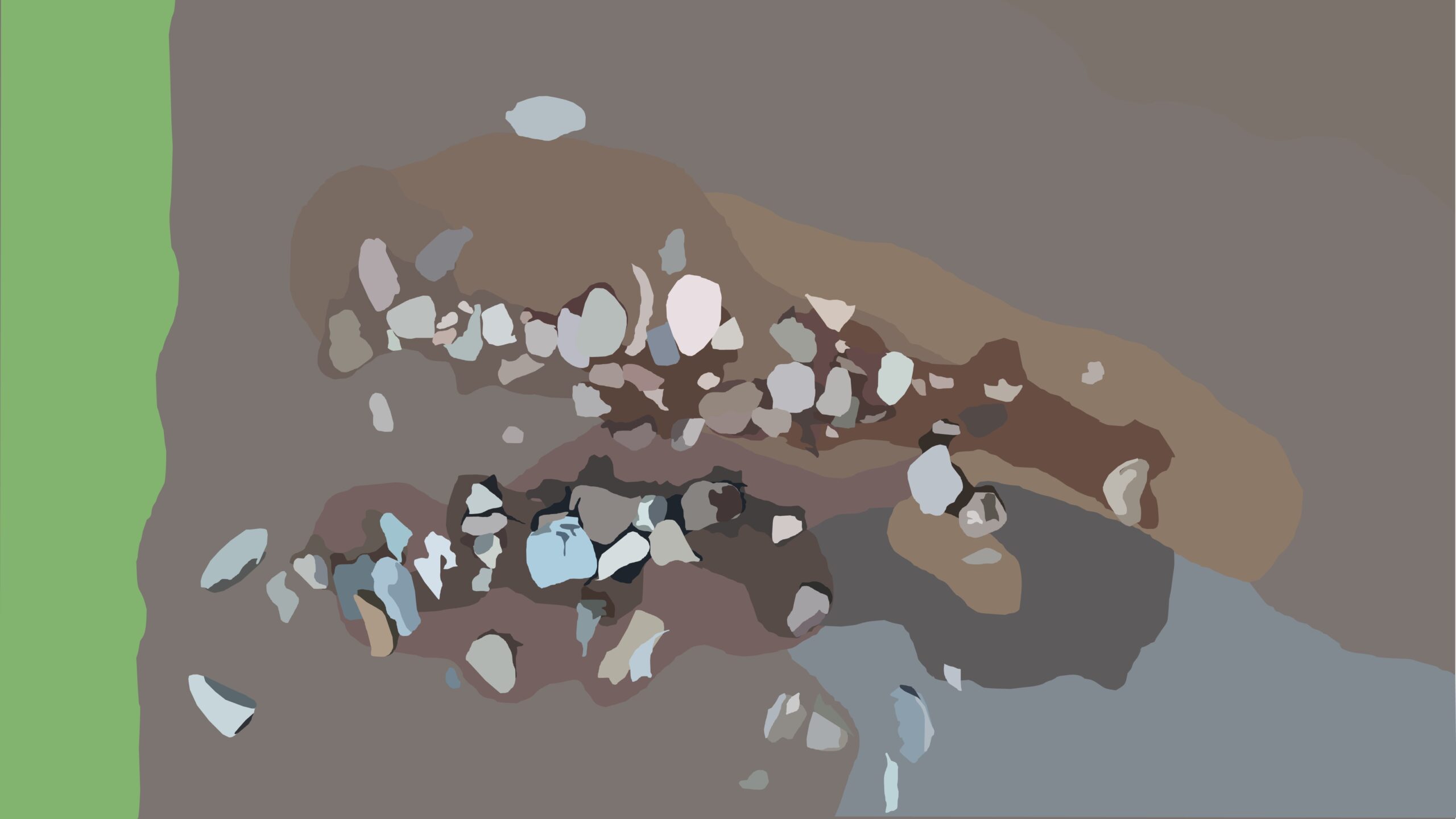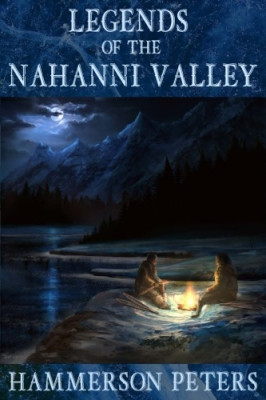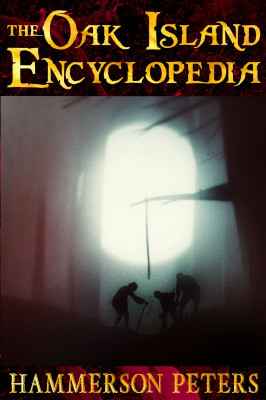The Curse of Oak Island- Season 8, Episode 3: If the Ox Shoes Fit
The following is a plot summary and analysis of Season 8, Episode 3 of the History Channel’s TV series The Curse of Oak Island.
[SPOILER ALERT!!!]
Plot Summary
The Fellowship of the Dig congregates in the War Room to discuss future operations in light of the Lagina brothers’ return to Oak Island. Doug Crowell informs us that the ‘wall’ which Dr. Ian Spooner discovered in the southeastern corner of the swamp the previous episode via sonar scan is actually the top of a 9’x9’ shaft. Rick then describes Fred Nolan’s initial discovery of this feature years ago, saying, “Fred surreptitiously drew the swamp down. Dan confronts him, makes him fill it back in. And then Fred says to Dan, ‘Hey, did you see that shaft over there in the corner of the swamp?’” The treasure hunters all agree that they ought to excavate this mysterious feature. Rick suggests that, during this excavation, they ought to process the spoils at the wash plant so that they don’t miss any artifacts hidden therein.

Marty Lagina then informs us that Laird Niven, Aaron Taylor, and David MacInnes have recently uncovered a layer of rocks beneath the tar kiln on Lot 15 which seem to indicate that the feature may be more than just a tar kiln, as previously suspected.
After the War Room meeting, Rick Lagina, Marty Lagina, and Doug Crowell meet with Scott Barlow, Billy Gerhardt, and Dr. Ian Spooner at the Oak Island swamp. We learn that the Fellowship plans to excavate the anomaly which Spooner identified through the use of a cofferdam, which will isolate the swamp’s southeastern corner from the rest of the wetland. The treasure hunters agree that the project may be even more difficult than the operation conducted at Smith’s Cove the previous season, prompting Marty to facetiously hand Gerhardt his wallet, saying, “Here you go, Billy. Might as well just have it right now.”

Later, Rick and Marty Lagina head to the dig site at Lot 15, where they meet with David MacInnes and a new archaeologist named Liz Michels. MacInnes shows the Lagina brothers a pile of rocks he removed from his archaeological trench and reminds them of his previous assessment that the stones might have once made up the floor of an early 18th Century British pine tar kiln. The archaeologist then points out more stones embedded in the ground below, which he found beneath the aforementioned stones. MacInnes declares that these stones “look like they’ve been thrown in by a person to fill in a well,” apparently suggesting that the feature, in light of this new discovery, might not be the remains of a tar kiln as previously believed, but rather a backfilled water well. Marty Lagina then offers his own suggestion that the feature might be the backfilled entrance of an underground tunnel, as Fred Nolan’s survey map indicates. With the help of the Lagina brothers, the archaeologists proceed to remove the nether stones from the trench.

Meanwhile, Alex Lagina meets with artifact conservator Kelly Bourassa at the Oak Island Research Centre. Alex shows Kelly the coin with a square hole which Gary Drayton and Jack Begley found on Oak Island’s Lot 15 back in the Season 8 premiere. The conservator immediately suggests that the artifact might be of Chinese origin. He examines the object under a microscope but fails to see any clear markings on its surfaces. He then takes high-quality photographs of both sides of the artifact beside an L-shaped ruler, which shows the coin to have a diameter of about 2.4 cm, and then cleans its faces with a toothbrush. Although Bourassa manages to remove some green copper tarnish from the artifact’s faces, he fails to reveal evidence of any characters which one might expect to find on a Chinese coin, although he does uncover what appears to be a coin-like edge.

Back on Lot 15, the archaeologists and the Lagina brothers remove a huge boulder from the mysterious structure with a backhoe, revealing an adjacent jumble of rocks. The archaeologists state that these new rocks appear to have been placed by man, and declare that they would like to excavate them in a slow archaeological manner. At the transitory beginning of the next scene, we hear David MacInnes, while working in his trench, mention, “This whole place is covered with fire-cracked rock,” fire-cracked rock being an archaeological term for rock deliberately split by heat.

Meanwhile, Gary Drayton and Jack Begley do some metal detecting on Lot 15, the same lot on which they discovered the possible Chinese coin and rigging axe head in Season 8, Episode 1. As they work their way towards the swamp, the pair uncovers what Drayton identifies as a “large broken ox shoe” from a draft ox. In a later interview, Drayton implies that this artifact may be evidence of a hauling operation in which heavy objects were transported between the Money Pit area and the swamp.

The treasure hunters resume their metal detecting operation and find another smaller ox shoe nearby. Jack Begley observes that a line drawn through the two ox shoes would intersect both the Paved Area in the swamp and the stone structure on Lot 15, suggesting that those two landmarks may have once been connected to each other by a wagon trail. Shortly thereafter, Gary and Jack find a third iron object, which Drayton identifies as a component of an ox cart. Later in the episode, we learn that another of Gary’s theories is that this item constitutes a piece of a harness. The treasure hunters agree that they must have stumbled upon some old ox trail along which heavy objects were hauled.

The next day, members of the Oak Island crew congregate in the War Room to Skype with representatives of Irving Equipment Ltd. – namely general manager David Irving, pile-driving manager Mathew Kingson, and research and development executive Patrick Craig. The men discuss the logistics of the upcoming cofferdam operation in the Oak Island swamp, which Irving has been tasked with overseeing. We learn that Irving will have to build a 1,600 square foot crane pad on the road which skirts the swamp’s southern edge in order to place the 89 steel sheets of which the cofferdam will comprise. David Irving informs the treasure hunters that his crew should be able to start working on the project in a month.

Later that afternoon, Alex Lagina and Jack Begley pay a visit to Carmen Legge at his new shop in Centreville, Nova Scotia, and show him some of their recent Oak Island discoveries. The blacksmithing expert declares that one of the ox shoes discovered on Lot 15 earlier that episode is a British winter shoe intended to cover the outside half of an ox’s left front foot. He dates the artifact from 1650-1750. When prompted by Alex, Legge states that the shoe could have been used by the British military. When prompted by Jack, the blacksmithing expert affirms that the shoe is distinctly British, differing in style from other German and French ox shoes which the treasure hunters have brought to him in the past, apparently in scenes which never made it into the final cut of the show.
The treasure hunters show Carmen Legge another of the ox shoes from Lot 15. The blacksmithing expert states that this object is also a winter shoe, and was probably made by the same smith who crafted the other artifact, albeit for a larger animal. Legge then examines the third ox shoe, which he states is a summer shoe intended for one of the posterior hooves. He opines that this third shoe was made by the same smith who crafted the other two shoes.
When informed that the three ox shoes were found on the same hypothetic trail connecting the Lot 15 structure with the Paved Wharf in the swamp, Carmen Legge expresses his opinion that some major industrial operation took place in the area. “In order to find these many shoes along that route,” he says, “means that there was a major activity. Transportation of something going back and forth there. It’s very unusual. It sounds like industry going on there. It wasn’t a couple of days, it was several months over a winter and summer period.”

Finally, Legge examines the heavy iron pin found on Lot 15, which Gary Drayton identified as a component of an ox cart. Legge similarly declares the object to be “a finial on the top of an ox cart”, finials being ornaments affixed to the ends of furniture and horse-drawn vehicles. He further suggests that, if the object is indeed a finial, it would have been part of a military ox cart as opposed to that of a civilian, “because [military men are] the only ones that would use any scroll work or knob work on their ox cart.”
Later that afternoon, the Fellowship of the Dig meets outside the Oak Island Interpretive Centre instead of in the War Room, apparently as a safety precaution in light of the pandemic. Alex Lagina and Jack Begley inform their fellow treasure hunters of Carmen Legge’s interpretation of the ox shoes found on Lot 15. Alex explains that, in a scene which failed to make it into the final cut of this episode, Legge informed him and Jack that oxen would typically wear out a pair of shoes in three months. “And we’re finding all kinds of them,” Alex says, “so his thought was, ‘that’s indicative of a lot of activity’.” Alex goes on to inform the Fellowship of Legge’s assessment that the ox shoes are evidence of military or large-scale industrial activity rather than agricultural activity. Gary Drayton agrees with Legge’s interpretation, noting that Lot 15 is too rocky to make for productive farmland.
Alex Lagina then produces the artifact which Gary Drayton thought might be a piece of a harness, and which Legge identified as a finial from a military ox cart. The treasure hunters agree that they ought to remove some of the rust coating the object’s head in order to more conclusively determine its nature.
Analysis
The Ox Shoes
In this episode, Gary Drayton and Jack Begley discovered three broken ox shoes on Oak Island’s Lot 15, the locations at which they were found hinting at the possibility that a wagon trail once connected the stone structure on Lot 15 with the Paved Area in the Oak Island swamp. Later in the episode, Jack Begley and Alex Lagina had these artifacts analyzed by Carmen Legge. The blacksmithing expert identified one of the objects as a part of an British winter shoe intended for the outside half of the left front foot, which he dated from 1650-1750. Legge stated that the shoe could have been used by the British military, and affirmed that it is of distinctly British design, different in style from other German and French ox shoes which the treasure hunters brought to him in the past, apparently in scenes which never made it into the final cut of the show.

As implied in this episode, these artifacts are not the first animal shoes to be discovered on Oak Island. Back in Season 5, Episode 8, the Lagina brothers, Dave Blankenship, and Gary Drayton discovered a horseshoe on Lot 16, which Drayton dismissed as a relic of Oak Island’s agricultural past. In Season 7, Episode 2, the treasure hunters discovered a number of ox shoes off camera, two of which Legge declared to be of 18th Century English manufacture.

It is perhaps worth mentioning, on account of the ox shoes discovered this episode, that the most famous incident involving oxen on Oak Island is the discovery of the Cave-In Pit. One day in 1875, Sophia Sellers- the daughter of Oak Island farmer and landowner Anthony Graves, whom local folklore says owned a mysterious collection of old gold and silver coins- was out ploughing her father’s field east of the Money Pit with a team of oxen. The ground on which the oxen and plough stood suddenly gave way, as if the earth beneath had sunk into some sort of subterranean void. The ox team disappeared into a 10-foot-deep pit which, when measured, turned out to be 7 feet in diameter- roughly the same size as the Money Pit. Subsequent investigation showed the sinkhole to be located 350 feet east of the Money Pit, precisely along the line of the supposed Smith’s Cove flood tunnel. Ever since its discovery, this mysterious feature, which some believe to be an airshaft created by the flood tunnel builders, has been called the “Cave-In Pit”.

Thanks for Reading!
Thanks for reading! If you enjoyed this article and would like to help support this channel, please check out our online bookshop:
















R J Daniels
The evidence of British Military ox carts hauling between the swamp and the lot 15 structure over a long period of time in both summer and winter lends credence to the original interpretation that the stone structure is a pine tar manufacturing facility.
It was used by the British to manufacture tar for their ships.
The presence of fire-cracked rock covering the area supports this.
The only unexplained fact is the tunnel connecting the stone structure to the money pit indicated by the 1988 Barringer survey.